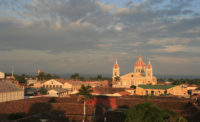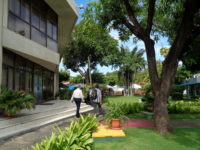Life has been a bit of a roller coaster over the last couple years for Costa Rica’s experimental architecture school, Faculty of Architecture and Environmental Studies/Universidad del Diseño (FAEA/UniDis). In August 2009, Architectural Record reported that the small and intensive program, which was founded in 1993, was shutting its doors. Financial considerations and competition from a growing number of for-profit schools prompted the decision, said the school’s founder, architect Álvaro Rojas, who explained that much of the teaching staff worked pro-bono and that he helped fund operations out of his own pocket. But in March 2011 the program got a second chance at life when Colegios de Costa Rica, which owns two pre-university educational systems, purchased the school license that was granted to UniDis at its inception. The new program (which may or may not be renamed) is located in the city of Heredia, about 10 miles from its original home in San José in a former coffee processing facility. “The Ministry of Education requires permission to relocate universities,” explains Rojas, who is now acting president of the university and dean of the faculty. “It took the new owners about one year to prepare facilities for the approval of the authorities. All the previous students graduated in 2009 and the new session started last March, with all fresh students.”
When Rojas negotiated the sale of UniDis, he retained the Costa Rican Foundation for Design, Art and Architecture (FundARQ)—the organization with which he originally founded the school—as well as internship agreements he had signed, in particular the one with Renzo Piano Building Workshop Foundation. And, despite all the recent changes, the so-called Mundaneum—a biannual symposium organized by Rojas’s FundARQ that brings together international practitioners and academics to speak at the school—stayed on course this year and lived up to the high expectations set by the conferences of years past. Founded in 1998 by Rojas and architects Guillermo Honles and Teddy Cruz, the Mundaneum, in a (literal) departure, took to the road this year when FundARQ signed an agreement with the University of Mendoza, Argentina, to hold the conference there. The local organizing committee was coordinated by architect Stella López Frasca and university administrator Cristina Párraga.
The theme of this year’s gathering was women in architecture and design. Over the course of three days in mid June, 16 “conferencistas” (predominantly women, with a smattering of men), presented their work and spoke on topics ranging from winery design in Mendoza to a women’s center in Rufisque, Senegal, to examining the built world from a feminist perspective.
Speakers included:
- Eliana Bórmida (Mendoza, Argentina)
- Mónica Bertolino (Cordoba, Argentina)
- Tatiana Bilbao (Mexico)
- Beth Broome (New York)
- Ming Fung (Los Angeles)
- Susana García/Francisco Serrano (Mexico)
- Guillermo Honles (Los Angeles)
- Mia Lehrer (Los Angeles)
- Alejandra Lillo (Los Angeles)
- Stella López Frasca (Mendoza, Argentina)
- Zaida Muxí (Barcelona)
- Álvaro Rojas (San José, Costa Rica)
- Carolina Trigo (Los Angeles)
- Helena Sandman (Helsinki)
- Cazú Zegers (Santiago, Chile)




